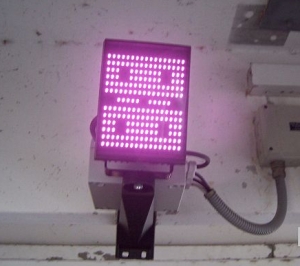
Major event managers, security companies, airline terminal operators and governmental entities are all beginning to use facial recognition software. It is being used for many reasons – to scan crowds for security reasons, to check out suspicious individuals, to recognize dignitaries and to prevent fraud and identity theft.
In the past, it has been difficult for governmental entities to track imposters because of a lack of manpower. However, government is now successfully fighting scam artists by using facial recognition software. The software uses complex algorithms and unique facial traits to compare driver’s license photos with other images in the department of motor vehicles (DMV) records. More than 40 states now use this software and are reporting significant results.

Photo: Facial recognition technology – Source: commons.wikimedia.org, public domain
The process begins when someone applies for a driver’s license or ID card. Once a photo of the individual is taken, the image is analyzed and a template is created. Each individual has unique physical features that a computer can quickly capture. In fact, computers can now identify a person’s ethnicity and approximate age in a matter of moments. Some even project weight and height.
Facial recognition software uses an algorithm to compare an image with thousands of other images in a database. The software searches for a match. If one is discovered, there is likely a problem. Errors do occasionally occur, but not too commonly. Many states are now sharing their photo databases with local law enforcement.
In New York, where facial recognition technology was introduced in 2010, the DMV has identified more than 14,000 people with two or more licenses (all fraudulent). Recently, the state upgraded its facial recognition technology by doubling the number of “measurement points” on a driver’s license photograph. This led to the arrest of 100 identity thieves and reopened 900 unsolved cases of fraud.
To understand the complexity, New York’s database holds more than 16 million photos. To complicate the issue even more, as many as 8,000 new photos are added each day.
New facial recognition technology now allows for analysts to overlay images or convert images to black and white, a technique used to better detect scars and other features. The software can also make allowances for aging, facial hair, weight gain or revised hairstyles.
In New Jersey, the DMV has referred more than 2,500 cases of fraud to local law enforcement since 2011. The Arizona Department of Transportation implemented facial recognition software a few years ago and the state has increased the number of potential ID fraud cases by more than 860 percent. The trend is gaining steam quickly.
Earlier this year, Illinois began upgrading its security process for driver’s license and ID cards. Now, individuals applying for an ID or driver’s license are issued a temporary paper license instead of a permanent license, with the temporary license valid for 45 days. This allows for time to let the facial recognition software analyze photos before finalizing any documents.
Watch carefully. A software program may be scanning your face the next time you enter an airport, apply for a driver’s license or attend a major event.
SPI’s team of procurement consultants help companies capture new business. Contact them today!
